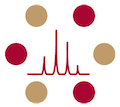Sample Preparation
Main content start
Instructions on sample preperation
Proteins in polyacrylamide gel
- Samples for protein identification by proteolytic digestion and LC-MS/MS are commonly submitted as Coomassie stained bands or spots in polyacrylamide gels.
- The gels should be handled as little as possible, to minimize contamination by dust and keratin.
- Destain Comassie stained gels by soaking for at least 2 hours in 10% acetic acid, 50% methanol, and 40% H2O with at least two changes of this solvent. If the gel still has a Coomassie Blue background then continue destaining until the background is nearly clear.
- Sypro Ruby and other fluorescent stained gels should not require an additional destaining step.
- After destaining, soak in pure water until pH is neutral.
- The spot or band of interest should be excised cleanly, excluding all of the surrounding blank gel; the goal is to maximize the ratio of protein to gel.
- The maximum size of a gel band should be 1.5 cm. Cut the excised gel into small pieces (1-2 mm square) and place in a clean eppendorf vial with a 1% acetic acid solution.
- Wet samples should be shipped on dry ice. Dry gel pieces may be shipped at room temperature.
- In-Gel Protocol
Proteins in solution
- Solution samples of proteins for identification will be treated with 8M urea to denature the protein before reduction and alkylation.
- Samples should be shipped on dry ice.
- Non acceptable buffers inlude NP40, CHAPS, Triton X, and PEG. If SDS is to be used, please contact the lab.
- In-Solution Protocol
Protein-related projects: MudPIT, de novo sequencing
Please contact SUMS to discuss sample prep and strategy for more complex projects such as MudPIT, peptide mapping, de novo peptide sequencing, and protein folding.
Included with a protein ID analysis:
- In-gel digestion with Trypsin/Lys-C (cuts after lysine and arginine)
- LC-MS/MS peptide fragmentation
- Database search against a standard protein database
- Results in electronic format, including the protein hits and supporting data
- A free 100 fmol myoglobin system suitability run
Additional Work (will be charged at the project rate):
- Searches for post translation modifications
- Formatting a unique database, for example a genomic database for your species of interest
- Searching for unique features
- For digests other than trypsin the client may be asked to pay for the purchase of the enzyme; if the enzyme needs to be special ordered, delivery of results may be delayed
Protein ID does not include the following:
- Detailed peptide mapping. Sequence coverage is reported, but if complete sequence coverage is your goal you might consider a peptide mapping project
- Disulfide linkage characterization is not included in protein ID and would be performed as a project if requested
